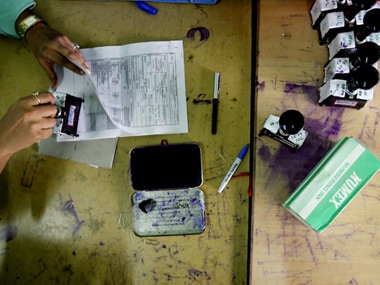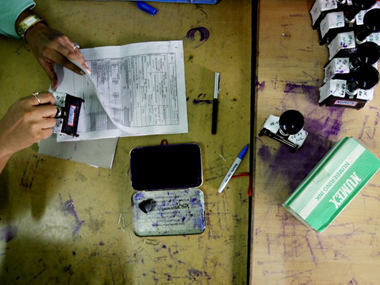The BJP has started asking fundamental questions about fiscal policy. If we’re willing to flirt with iconoclastic ideas, there are good foundations for two propositions:
It would be wise to cut total expenditure of the government to 12 percent of GDP.
There are only two sensible taxes – income tax on individuals, and GST. All other taxes should be eliminated.
That leaves the problem of building sound tax policy and tax administration through which the income tax on individuals and the GST are set up, that yield revenue of 12 percent of GDP.
Let’s start at expenditure. The golden age of the UK was from 1865 to 1914. In this period, the UK had price stability, the world’s strongest army, good law and order, good courts, parks, clean water, a Metro system in London, and so on. They had world class public goods. Roughly speaking, the UKgovernmentdid all this while spending 10 percent of GDP. This gives us one objective benchmark: All you need, to deliver a comprehensive array of world class public goods, is 10 percent of GDP.
[caption id=“attachment_1108161” align=“alignleft” width=“380”]  India can provide a good government with 12 percent tax-GDP ratio. For this, we can abolish all taxes barring income tax and GST. Reuters[/caption]
That leaves redistribution or subsidies. In the golden age of the UK, there were no subsidies. In India, we believe that we should help the poorest 20 percent of the population. This can be set up as a cash transfer costing 2 percent of GDP. If we are willing to spend 2 percent of GDP on delivering cash to 20 percent of the population, this pays for a subsidy of Rs 150 per household per day. This is an ample subsidy that will eliminate the extremities of poverty.
The government of India does a lot of things in the name of poor people. We would gain much by shutting all of them down, and replacing them by this cash transfer. The government of India does lots of things which are not public goods. We would gain much by shutting all of them down. That leaves a required expenditure outlay of 12 percent of GDP.
How do we obtain 12 percent of GDP? We need a tax system that would yield 12 percent of GDP. The puzzle lies in doing this at the lowest possible distortion of the economy. The distortion caused by a tax goes up sharply when the rate is raised, in proportion to the tax rate squared. An income tax rate of 20 percent is four times more distortionary when compared with an income tax rate of 10 percent. For this reason, it would make sense to have two taxes: the income tax on individuals and the GST. By having two taxes and not one, each rate can be lower.
All other taxes in India are mistakes; they impose terrible distortions and should go. These include customs duties, octroi, electricity duty, transaction taxes, stamp duty, etc. An important candidate for this bonfire of the taxes is taxation of corporations. All corporations are owned by individuals: If we just taxed individuals, we would tax all income once. The entire attempt at taxing corporations is conceptually a mistake and is worth eliminating.
We would gain a lot by getting rid of all these taxes and their commensurate tax administration capabilities. But we will need to build top quality tax policy and tax administration for the income tax for individuals and for the GST. Every individual would have to deal with exactly one tax man – to pay income tax – and it would be a low rate. Every firm would have to deal with exactly one tax man – to pay the GST – and it would be a low rate.
It is valuable to obtain income tax from a very large number of individuals in the country. This makes possible a lower tax rate. As the distortion associated with a tax goes up as the tax rate squared, it is good to go down to a lower rate. In addition, when most adults in the country pay taxes, this improves the political economy: people who pay taxes are more careful in the expenditure programmes that they ask for. In contrast, people who pay no taxes are likely to blindly support more profligacy as they are not paying for it.
For more on the tax system, see this paper by Vijay Kelkar and me.
If there is an appetite for first principles thinking, then, there is a lot of appeal in this platform: (a) A cash transfer where 2 percent of GDP is gifted to 20 percent of the population, (b) Create public goods by spending 10 percent of GDP, (c) Obtain 6 percent of GDP through a low income tax rate applied to 66 percent of adults, (d) Obtain (the other) 6 percent of GDP through a low GST rate, that is applied on 200,000 firms, (e) Remove all other taxes, and (f) Remove all existing subsidies.
Every state requires tax resources. When a state has no tax base, it is down to exactly two sources of revenue: seignorage and the inflation tax. The inflation tax generates rapidly spiraling hyperinflation. When people mistrust the rupee and switch to gold or dollars or bitcoin, this hurts seignorage revenues. In history, every state that failed to build a tax capability has collapsed, and generated a social and political catastrophe.
It is easy to make fun of the BJP or AAP who are asking basic questions. There is value, however, in asking first principles questions, and in being willing to say that the emperor has no clothes. We will go far in public life in India if we are constantly willing to challenge the foundations of what is being done in public policy, for most of what is in place is based on bad thinking.
Ajay Shah’s Blog

)
)
)
)
)
)
)
)
)



